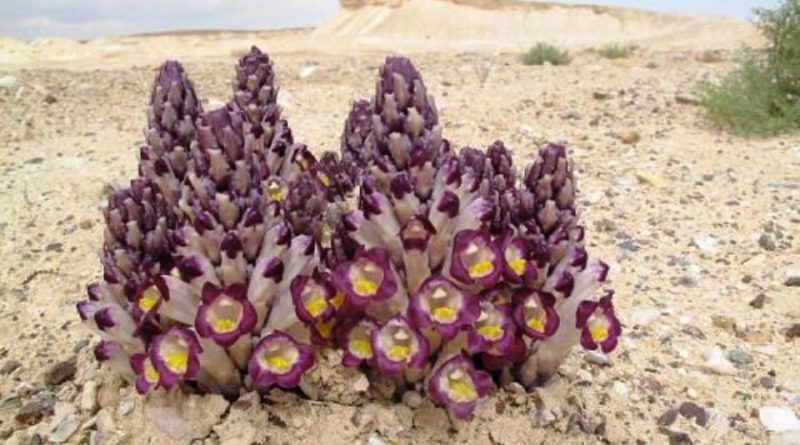Cistanche salsa
Cistanche salsa
Cistanche salsa (Cistanche salsa (C. A. Mey.) Beck) is a parasitic plant belonging to the Orobanchaceae family
Systematics –
From the systematic point of view it belongs to the Eukaryota Domain, Kingdom Plantae, Subarign Tracheobionta, Superdivisione Spermatophyta, Magnoliophyta Division, Magnoliopsida Class, Sottoclasse Asteridae, Order Scrophulariales, Family Orobanchaceae and therefore to the Genus Cistanche and to the Species C. salsa-
The terms are synonymous:
– Anblatum tartaricum Fisch .;
– Cistanche jodostoma Butkov & Vved .;
– Cistanche salsa var. albiflora P.F.Tu & Z.C.Lou;
– Cistanche salsa var. longidens Gilli;
– Cistanche speciosa Butk .;
– Cistanche stenostachya Butk .;
– Orobanche rhizopus Wallr .;
– Orobanche rhizopus Wallr. ex Ledeb .;
– Orobanche salsa (C.A.Mey.) Kuntze;
– Orobanche squamaria Fisch .;
– Orobanche squamaria Fisch. ex Ledeb .;
– Phelipaea gigantea Karelin;
– Phelipaea incana Payne;
– Phelipaea C.A. Meyer sauce;
– Phelypaea C.A.Mey sauce.
Etymology –
The term Cistanche is unknown.
The specific sauce epithet comes from salor come salty: for growth in saline environments.
Geographic Distribution and Habitat –
Cistanche salsa is a parasitic plant of the Republic of Kazakhstan, where it is used as an industrial raw material.
Its habitat is that of arid climates where the parasitic plant connects to the root system, extracting water and nutrients from the roots of the host plant.
Description –
Cistanche salsa is a hardy, shrub-like herbaceous perennial plant, 40-160cm tall.
It has the shape of a cross between a pine cone and a pineapple, with thick and fleshy stems and large whitish purplish flowers at the apex.
Cultivation –
Cistanche salsa is a plant that grows in arid and brackish climates typical of some areas of the desert where it grows at the expense of host plants from which it obtains water and nutrients for its growth.
Customs and Traditions –
The scientific value of this herb in traditional Chinese medicine relates to the treatment of kidney problems (ranging from pain to various forms of insufficiency), impotence, female infertility, morbid leukorrhea, profuse metrorrhagia and senile constipation.
The chemical composition of the stolons which is common to other Cistanche species has already been studied in detail by Chinese scientists. The following phenolic compounds have been identified: echinacoside, tubuloside, acteoside, as well as lignans, iridoids and a complex polysaccharide.
Some scholars have shown that this herb has a cholesterol-lowering, hepatoprotective, anti-inflammatory effect, due to its extracts. A complex polysaccharide previously isolated from this plant showed immunomodulatory effects.
Although there is a considerable amount of these plants, in the Republic of Kazakhstan, there is no popular use by the Kazakh population, while neighbors in China use it extensively.
Together with other members of the genus, the drug is obtained, known in Chinese as suosuo dayun; this is harvested in the spring before budding, cutting the stems of the plant.
Cistanche salsa, along with other species of its genus, has been used as a medicine for about 1800 years and is recorded in Shennong Bencao Jing and Bencao Gangmu as a tonic. Most claims about medicines have never been evaluated in clinical trials, and those claims that have been reviewed in controlled medical studies are not yet well supported.
Preparation Method –
Of this plant the stems of the plant are used which must be cut in spring before this sprouts.
Guido Bissanti
Sources
– Acta Plantarum – Flora of the Italian Regions.
– Wikipedia, the free encyclopedia.
– Useful Tropical Plants Database.
– Conti F., Abbate G., Alessandrini A., Blasi C. (edited by), 2005. An annotated checklist of the Italian vascular flora, Palombi Editore.
– Pignatti S., 1982. Flora of Italy, Edagricole, Bologna.
– Treben M., 2000. Health from the Lord’s Pharmacy, Advice and experiences with medicinal herbs, Ennsthaler Editore.
Warning: Pharmaceutical applications and alimurgical uses are indicated for informational purposes only, they do not represent in any way a medical prescription; we therefore decline all responsibility for their use for curative, aesthetic or food purposes.


